

News
Stoke Space to build SpaceX Raptor engine’s first real competitor
Seattle startup Stoke Space has revealed plans to develop an efficient rocket engine similar to the Raptors that power SpaceX’s Starship.
Formed in October 2019, Stoke Space secured its first significant round of funding – $9.1 million – less than three years ago. At that time, CEO and co-founder Andy Lapsa says that the startup had just five employees, no permanent workspace, and a “barren field” for a test site. Within 18 months, Stoke Space had turned that empty field into an impressive test facility, conducted numerous component tests, and assembled its first full-scale rocket engine – an exotic UFO-like device unlike any seen before.
It also raised another $65 million – enough funding to begin earnestly developing a potentially revolutionary rocket capable of launching more than 1.65 tons (~3600 lb) into orbit for less than half a million dollars. To realize that extremely ambitious goal, Stoke Space has taken the even more ambitious step of attempting to make the first rocket it develops fully reusable. Simultaneously, the company has incorporated several exotic technologies into that rocket, recently culminating in a surprise announcement that it will attempt to develop one of the most difficult types of engines to power that rocket’s booster stage.
The update that's rolling out to the fleet makes full use of the front and rear steering travel to minimize turning circle. In this case a reduction of 1.6 feet just over the air— Wes (@wmorrill3) April 16, 2024
Full-flow staged combustion
At the end of an extended interview and tour with YouTuber Tim Dodd (The Everyday Astronaut), CEO Andy Lapsa revealed that Stoke Space has decided to build a full-flow staged combustion (FFSC) engine for the first stage of its reusable rocket. FFSC is the most efficient type of combustion cycle available for a chemical bipropellant rocket engine, but it’s also the most difficult to develop.
A full-flow engine attempts to squeeze every possible ounce of performance out of the propellant it consumes. The most powerful and efficient chemical rocket engines must consume huge volumes of propellant in a short amount of time without destroying the launch vehicle they’re attached to. To create pressure and spin the pumps that are needed to feed that propellant into their main combustion chamber, engines often burn a small amount of propellant in a separate gas generator or preburner. Gas-generator engines vent that exhaust overboard, reducing efficiency but making for a much simpler design. Staged-combustion engines use preburners to create gas that pumps liquid propellant, and that exhaust gas is eventually injected into the main combustion chamber.
Full-flow staged combustion sets itself apart by having two separate pumps and preburners for oxidizer and fuel. Unlike simpler variants of staged combustion, FFSC engines turn all of their propellant into gas before injecting it into the combustion chamber. That hot gas increases the heat of combustion and the pressure inside the combustion chamber, ensuring that virtually all of the propellant that flows through the engine is combusted and turned into thrust as efficiently as possible. FFSC is exceptionally difficult because of the extra-high temperatures and pressures it requires, as well as the need for an oxygen-rich preburner and pump. In a high-pressure, hot-oxygen environment, virtually anything imaginable – including most metals – will spontaneously combust.
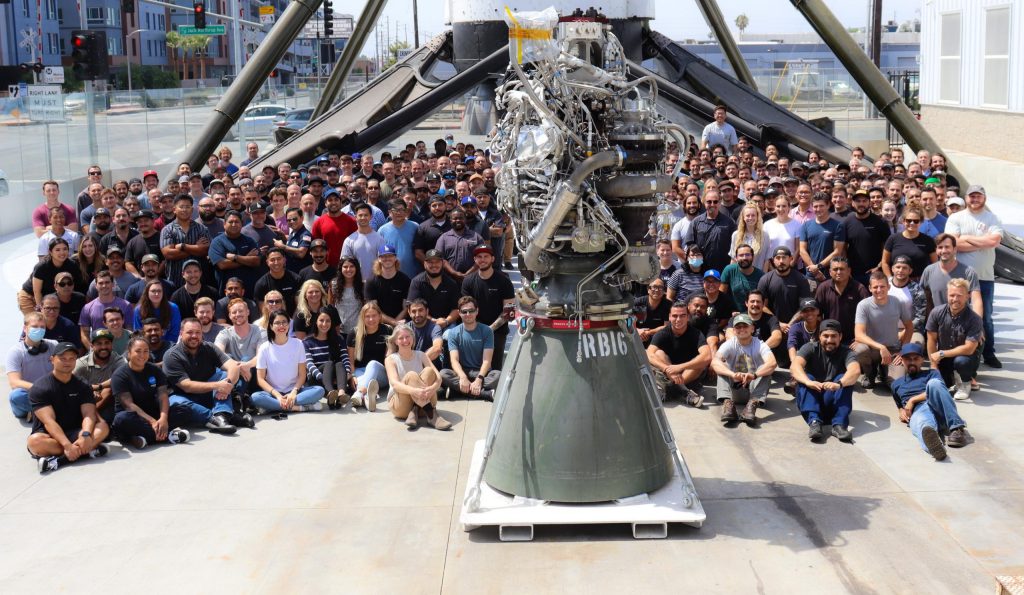
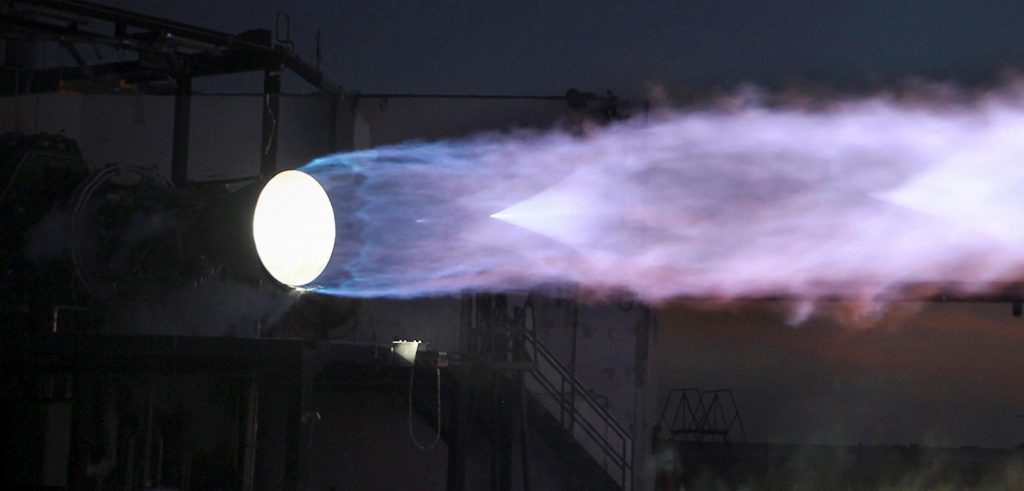
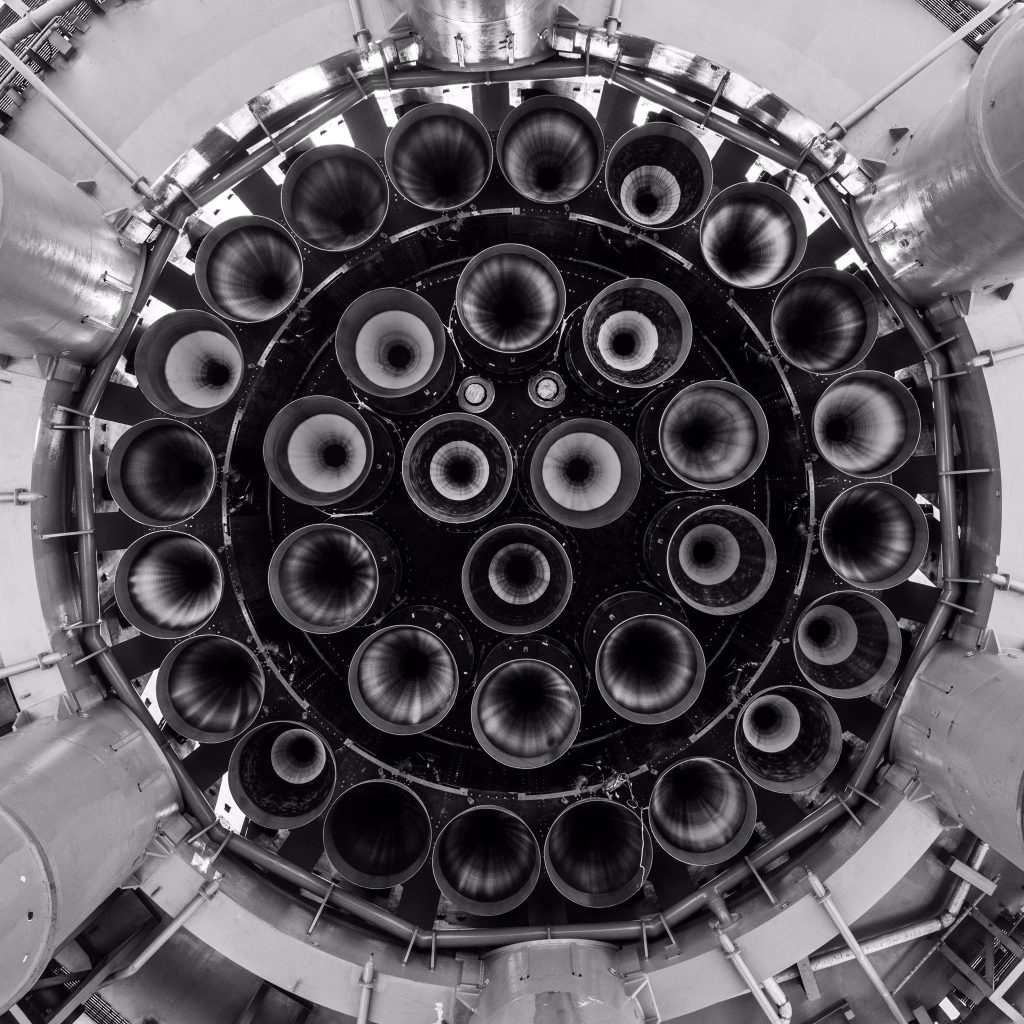

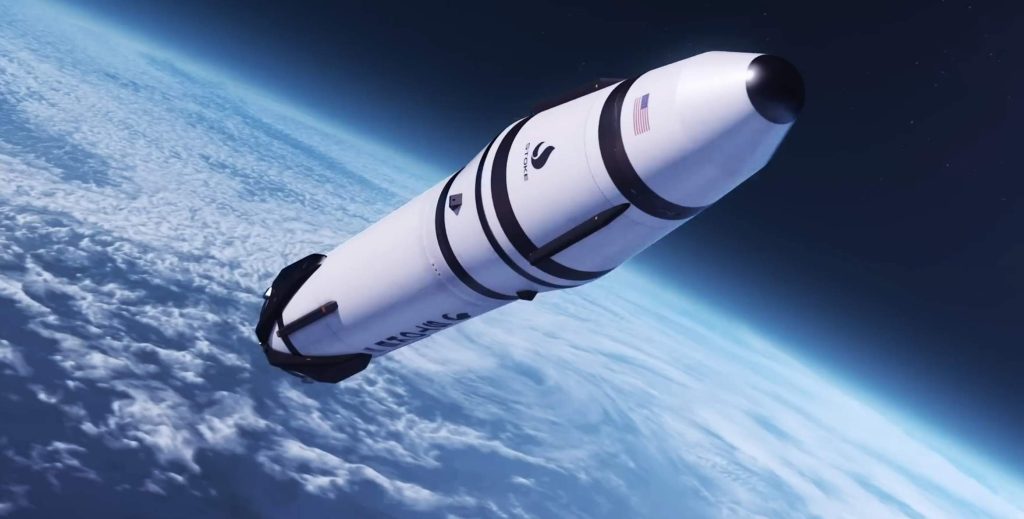
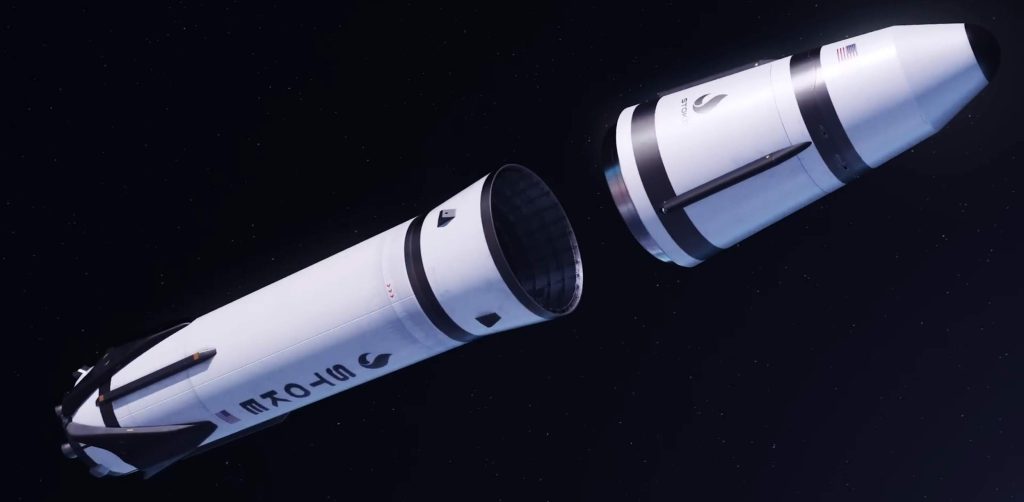
Only complex custom-designed alloys can survive those conditions. SpaceX’s Raptor, the only FFSC engine that has ever flown, is especially difficult because it’s meant to be highly reusable. To be successful, Raptor will have to survive those conditions dozens or even hundreds of times in a row with little to no maintenance in between.
The first booster engine Stoke Space ever attempts to build will be a reusable full-flow staged combustion engine powered by liquid methane and liquid oxygen – essentially a smaller version of SpaceX’s Raptor. Stoke’s booster is otherwise familiar and features deployable landing legs like SpaceX’s Falcon boosters. Lapsa says it will likely also have grid fins.
Reusing the upper stage
In some ways, the upper stage of Stoke’s first rocket is even more ambitious. Powered by hydrogen and oxygen propellant, Stoke has designed a conical capsule-like upper stage with an integral fairing. The upper stage’s propulsion is exotic and unique. A large pump will feed propellant to up to 30 combustion chambers distributed around the rim of its heat shield. The exhaust coming from those 30 chambers will expand and partially push against the upper stage’s equally exotic metallic, liquid-cooled heat shield. That expansion against the heat shield improves the efficiency of the upper stage and means that its engine will technically be an aerospike.
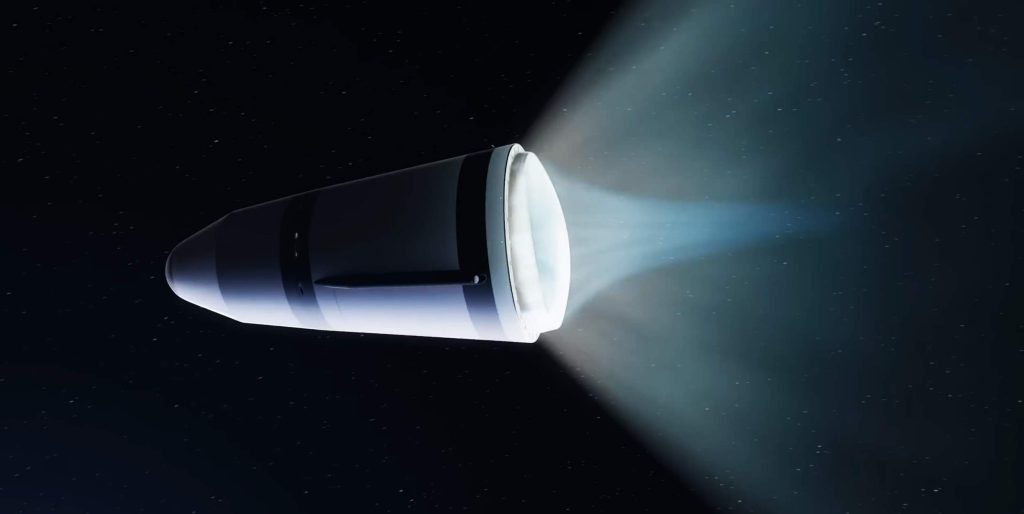
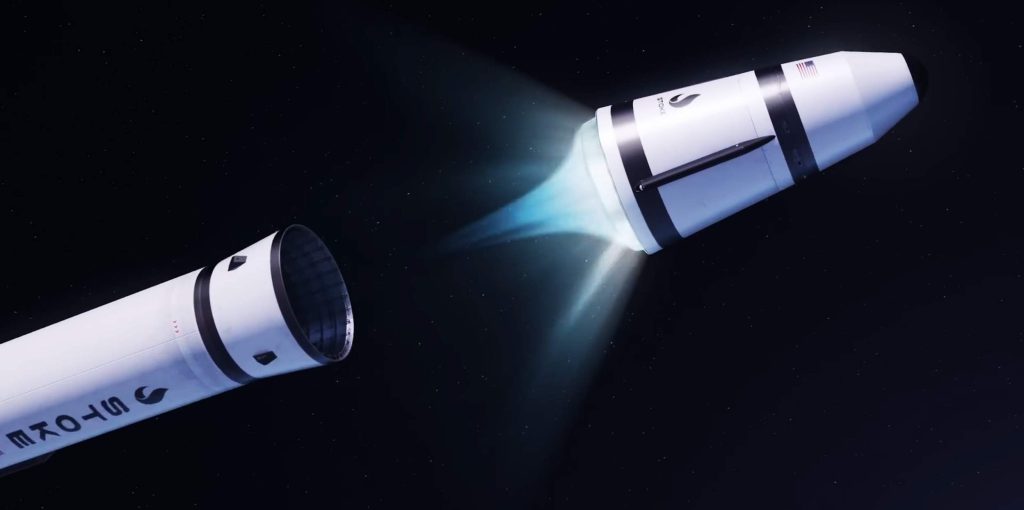
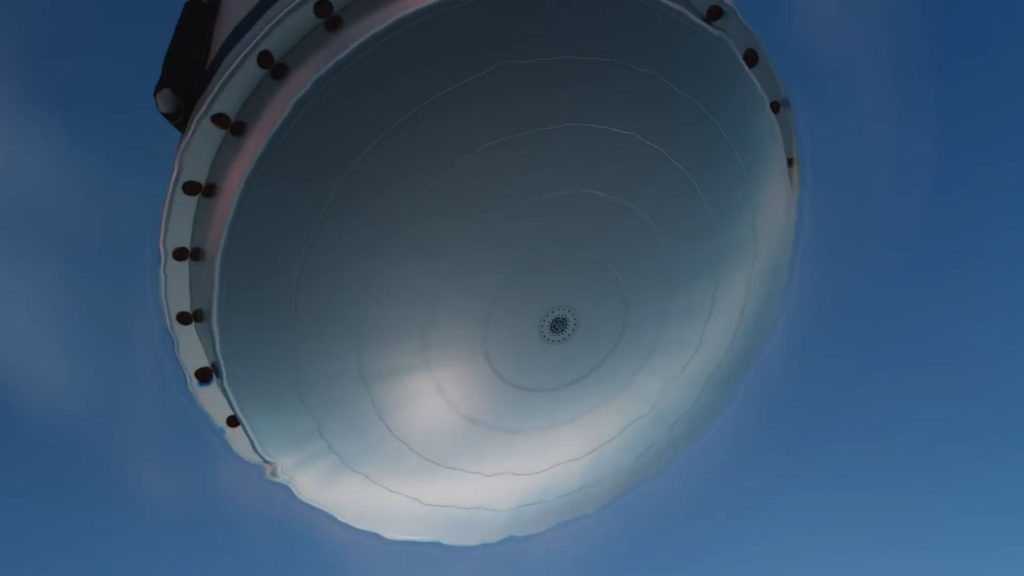
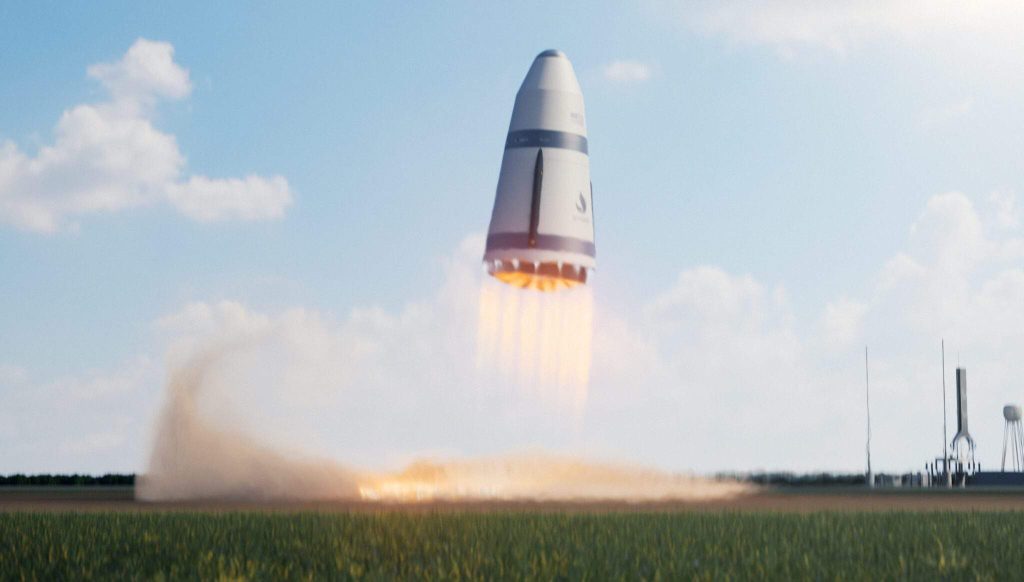
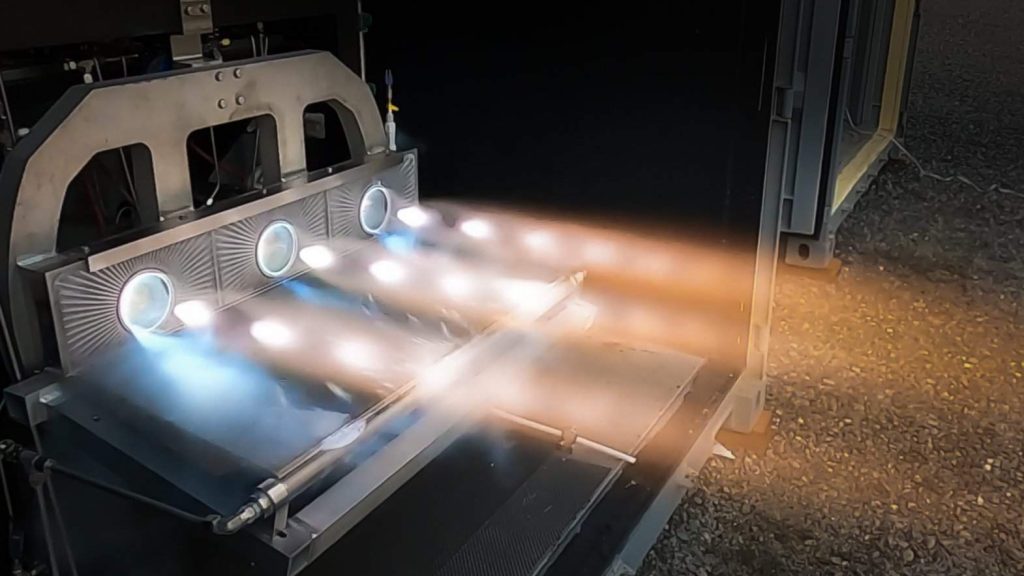

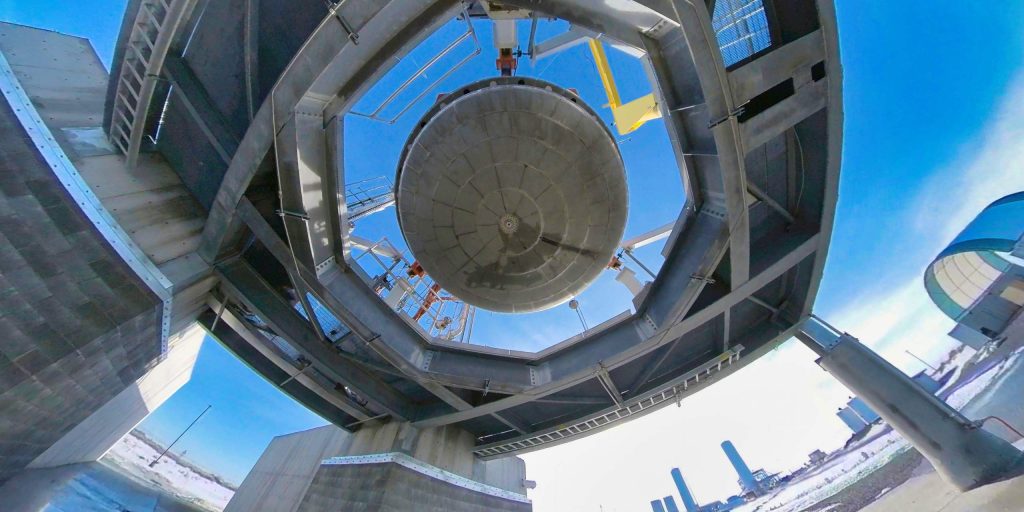
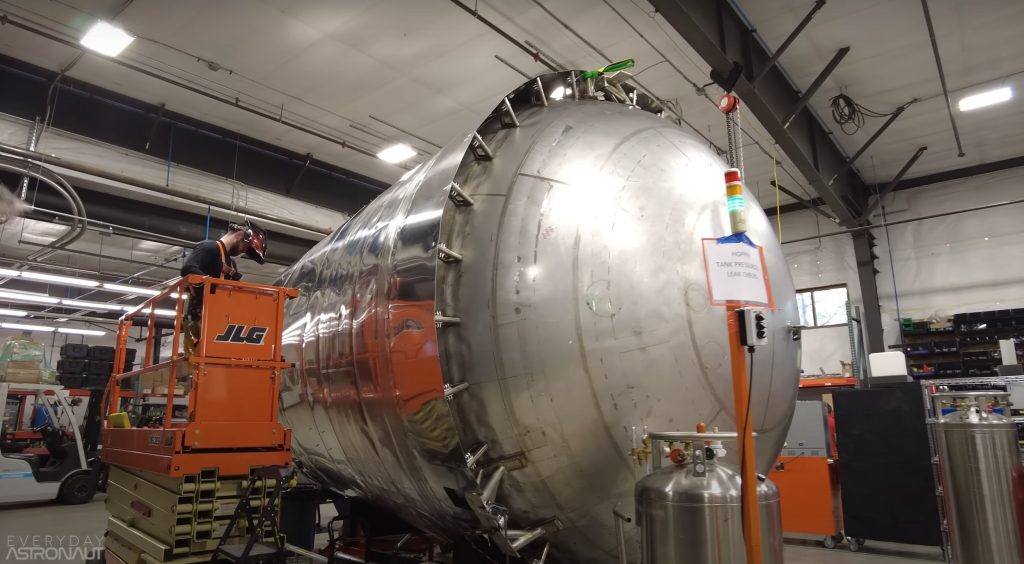
Stoke has already begun testing a full-scale version of the upper stage’s UFO-like rocket engine with 15 combustion chambers. Since testing began in the second half of 2022, Stoke has completed dozens of static fires. Everyday Astronaut’s tour also revealed that the startup has made significant progress fabricating and assembling its first full-scale upper stage prototype – tanks, nosecone, heat shield, engine, and all.
Reminiscent of SpaceX’s Grasshopper and Starhopper campaigns, Stoke plans to conduct hop tests with that prototype if it makes it through qualification testing. On February 7th, Stoke also revealed that it’s begun testing a crucial component of its full-flow booster engine. All told, Stoke Space is making progress at a remarkable pace and continues to tackle the hardest problems. The startup has also avoided widely publicizing any specific deadlines, instead choosing to let hardware and tangible results speak for themselves. Only time will tell if that approach pays off, but Stoke is off to an exceptionally impressive start in an industry full of impressive rocket startups.
News
SpaceX’s Crew-11 mission targets July 31 launch amid tight ISS schedule
The flight will lift off from Launch Complex 39A at Kennedy Space Center in Florida.
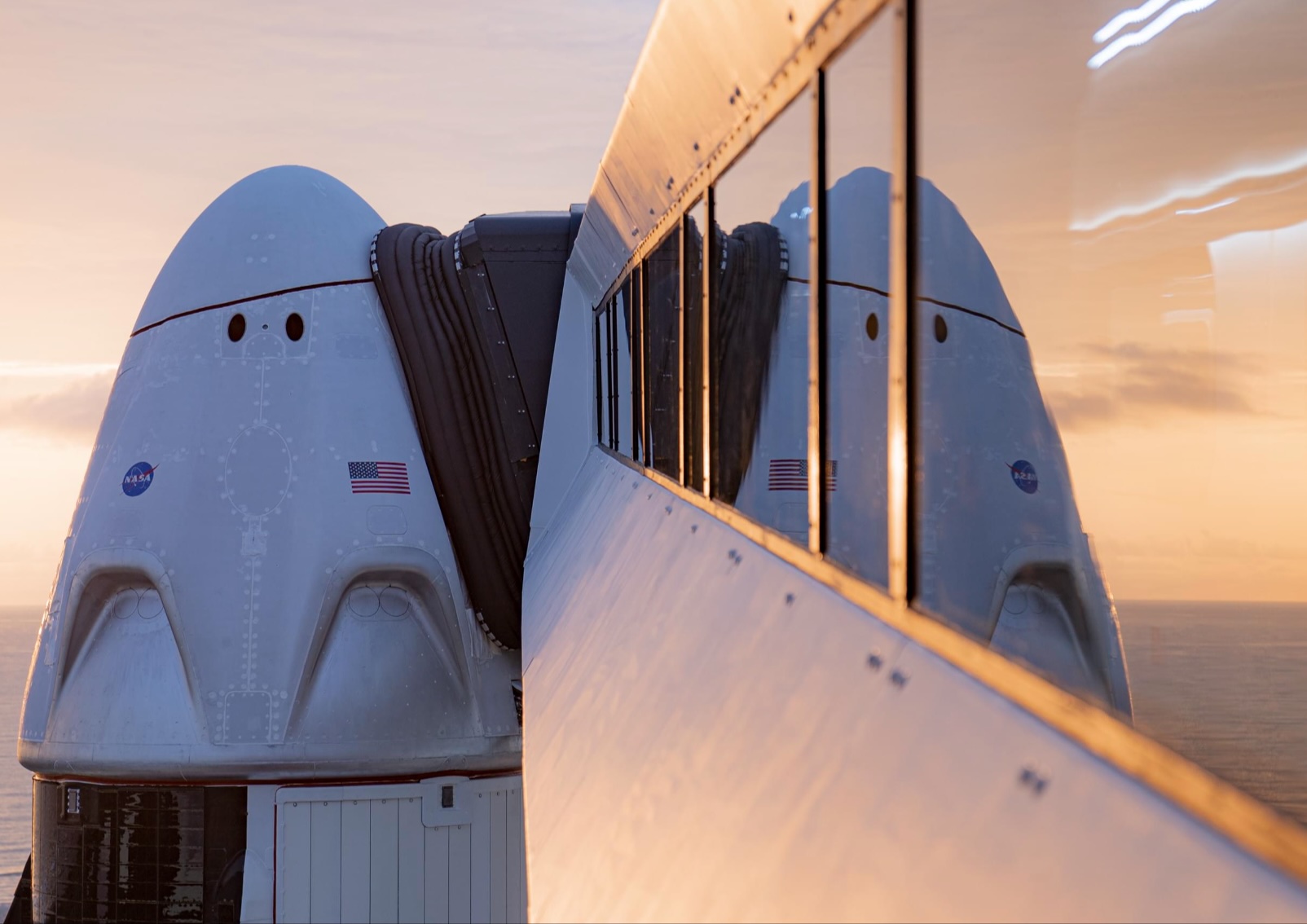
NASA and SpaceX are targeting July 31 for the launch of Crew-11, the next crewed mission to the International Space Station (ISS). The flight will lift off from Launch Complex 39A at Kennedy Space Center in Florida, using the Crew Dragon Endeavour and a Falcon 9 booster.
Crew Dragon Endeavour returns
Crew-11 will be the sixth flight for Endeavour, making it SpaceX’s most experienced crew vehicle to date. According to SpaceX’s director of Dragon mission management, Sarah Walker, Endeavour has already carried 18 astronauts representing eight countries since its first mission with NASA’s Bob Behnken and Doug Hurley in 2020, as noted in an MSN report.
“This Dragon spacecraft has successfully flown 18 crew members representing eight countries to space already, starting with (NASA astronauts) Bob (Behnken) and Doug (Hurley) in 2020, when it returned human spaceflight capabilities to the United States for the first time since the shuttle retired in July of 2011,” Walker said.
For this mission, Endeavour will debut SpaceX’s upgraded drogue 3.1 parachutes, designed to further enhance reentry safety. The parachutes are part of SpaceX’s ongoing improvements to its human-rated spacecraft, and Crew-11 will serve as their first operational test.
The Falcon 9 booster supporting this launch is core B1094, which has launched in two previous Starlink missions, as well as the private Ax-4 mission on June 25, as noted in a Space.com report.
The four-members of Crew-11 are NASA astronauts Zena Cardman and Mike Fincke, as well as Japan’s Kimiya Yui and Russia’s Oleg Platonov.
Tight launch timing
Crew-11 is slated to arrive at the ISS just as NASA coordinates a sequence of missions, including the departure of Crew-10 and the arrival of SpaceX’s CRS-33 mission. NASA’s Bill Spetch emphasized the need for careful planning amid limited launch resources, noting the importance of maintaining station altitude and resupply cadence.
“Providing multiple methods for us to maintain the station altitude is critically important as we continue to operate and get the most use out of our limited launch resources that we do have. We’re really looking forward to demonstrating that capability with (CRS-33) showing up after we get through the Crew-11 and Crew-10 handover,” Spetch stated.
Lifestyle
EV fans urge Tesla to acquire Unplugged Performance for edge in fleet and security industry
Unplugged Performance has built a name for itself by producing performance upgrades for Tesla vehicles.
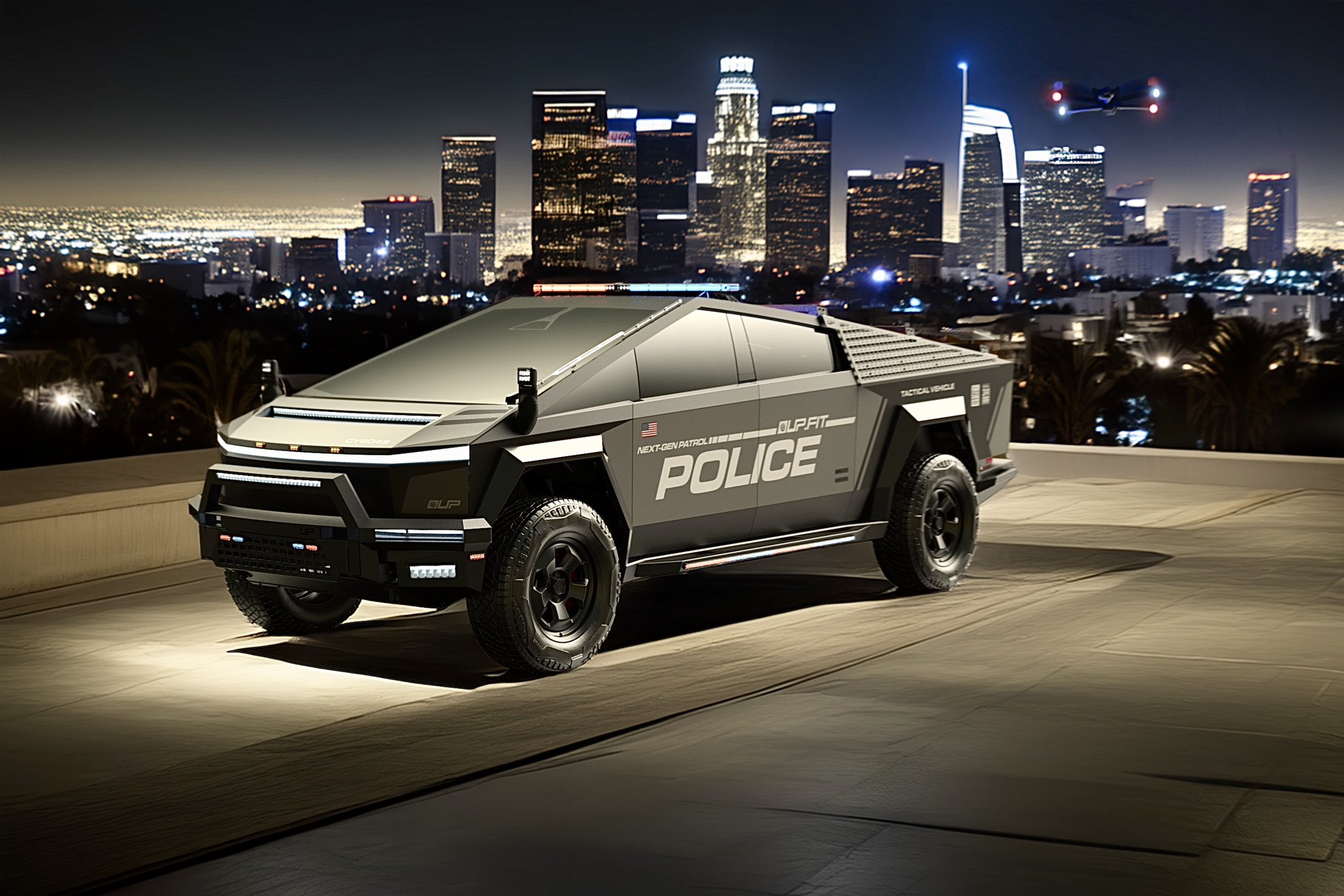
A growing number of Tesla enthusiasts and longtime community voices are calling on the electric vehicle maker to acquire Unplugged Performance, a California-based aftermarket company best known for tuning Tesla vehicles and developing specialized government fleet solutions under its UP.FIT division.
The idea was once considered a niche proposal among EV fans, but it is now gaining serious attention not just as a performance play but as a strategic move to deepen Tesla’s roots in the fleet and security industry.
A strategic fit
Unplugged Performance has built a name for itself by producing performance upgrades for Tesla vehicles, from track-optimized components to visual and aerodynamic upgrades. But in recent years, its UP.FIT division has pivoted toward a more functional future by outfitting Tesla vehicles like Model Ys for police, military, and government use.
That work has sparked growing calls for closer collaboration with Tesla, especially as the EV maker increasingly leans into autonomy, AI, and fleet services as core components of its next chapter.
“I posted this four years ago, but I think it’s more true now than ever,” wrote Whole Mars Catalog, a well-known Tesla investor and FSD Beta tester, on X. “Tesla should buy Unplugged. But not just as a Performance division. What they are doing with UP.FIT unlocks large government and commercial fleet purchases that can improve utilization.”
Tesla fans such as shareholder Sawyer Merritt echoed the sentiment, calling Unplugged a “great fit within Tesla.” adding, “They are literally located directly next to Tesla’s design studio in Hawthorne.”
Enabling the next wave
Supporters of the idea noted that integrating Unplugged into Tesla’s corporate structure could help accelerate the adoption of autonomous technologies in government sectors. With UP.FIT patrol cars already in use across some U.S. police departments, Tesla fans envisioned a future where self-driving Teslas could potentially revolutionize law enforcement, search-and-rescue, and public service logistics.
“Just imagine how autonomous patrol cars could transform policing and bring us into a safer future,” the veteran FSD tester wrote.
The benefits could also extend to Tesla’s existing consumer base. “They also have some incredible products in the works that I think will appeal to many ordinary Tesla drivers — not just those looking for performance or mods. Stuff that’s so good it should have come straight from the design studio next door,” Whole Mars Catalog noted.
Unplugged Performance, founded in 2013, shares not just a product vision with Tesla, but also geography. Its Hawthorne headquarters sits directly adjacent to Tesla’s design studio, and the two companies have maintained a close working relationship over the years. The aftermarket firm has long positioned itself as a “mission-aligned” partner to Tesla.
In response to the recent calls for acquisition, Unplugged Performance acknowledged the support from the community. “Our very existence is to support the Tesla mission with @UpfitTesla and @UnpluggedTesla,” Unplugged CEO Ben Schaffer posted on X. “We love working with Tesla and are grateful for the community’s support since 2013!”
News
Tesla debuts hands-free Grok AI with update 2025.26: What you need to know
All new Tesla vehicles delivered on or after July 12, 2025, will include Grok AI out of the box

Tesla has begun rolling out Grok, an in-car conversational AI assistant developed by xAI, to eligible vehicles starting July 12. The feature marks the most direct integration yet between Elon Musk’s artificial intelligence startup and Tesla’s consumer product lineup, offering drivers hands-free access to a chat-style companion while on the road.
Grok comes pre-installed on new vehicles
According to Tesla’s FAQ page for the feature, all new vehicles delivered on or after July 12, 2025, will include Grok AI out of the box. Owners of older vehicles may gain access through an over-the-air update, provided their vehicle meets a few hardware and software requirements.
Specifically, Grok is currently only supported on Tesla models equipped with an AMD infotainment processor and running vehicle software version 2025.26 and higher. Compatible models include the Model S, Model 3, Model X, Model Y, and Cybertruck. A Premium Connectivity subscription or active Wi-Fi connection is also required.
Tesla notes that additional vehicle compatibility may arrive in future software updates.
Grok’s features and limitations for now
Drivers can engage with Grok using the App Launcher or by pressing and holding the voice command button on the steering wheel. Grok is designed to answer questions and hold conversations using natural language, offering responses tailored to its chosen personality—ranging from “Storyteller” to the more eccentric “Unhinged.”
For fun, Tesla posted a demonstration of Grok likely running on “Unhinged” talking about what it would do to Optimus when they are on a date, much to the shock of the humanoid robot’s official social media account.
It should be noted, however, that Grok cannot currently issue commands to the vehicle itself, at least for now. Traditional voice commands for tasks like climate control, navigation, or media remain separate from Grok as of writing.
The feature is being released in Beta and does not require a Grok account or xAI subscription to activate, although that policy may change over time.
Grok privacy and in-car experience
Tesla emphasizes that interactions with Grok are securely processed by xAI and not linked to a user’s Tesla account or vehicle. Conversations remain anonymous unless a user signs into Grok separately to sync their history across devices.
Tesla has also begun promoting Grok directly on its official vehicle webpages, showcasing the feature as part of its in-car experience, further highlighting the company’s increasing focus on AI and infotainment features on its all-electric vehicles.
-

 Elon Musk2 weeks ago
Elon Musk2 weeks agoTesla investors will be shocked by Jim Cramer’s latest assessment
-

 Elon Musk3 days ago
Elon Musk3 days agoxAI launches Grok 4 with new $300/month SuperGrok Heavy subscription
-

 Elon Musk5 days ago
Elon Musk5 days agoElon Musk confirms Grok 4 launch on July 9 with livestream event
-

 News1 week ago
News1 week agoTesla Model 3 ranks as the safest new car in Europe for 2025, per Euro NCAP tests
-

 Elon Musk1 week ago
Elon Musk1 week agoxAI’s Memphis data center receives air permit despite community criticism
-

 News2 weeks ago
News2 weeks agoXiaomi CEO congratulates Tesla on first FSD delivery: “We have to continue learning!”
-

 Elon Musk2 weeks ago
Elon Musk2 weeks agoTesla scrambles after Musk sidekick exit, CEO takes over sales
-

 News2 weeks ago
News2 weeks agoTesla sees explosive sales growth in UK, Spain, and Netherlands in June
















